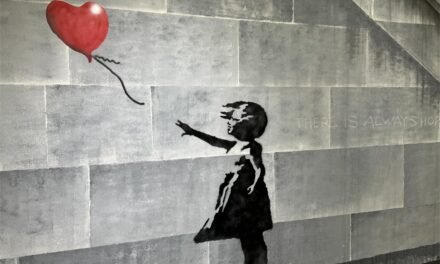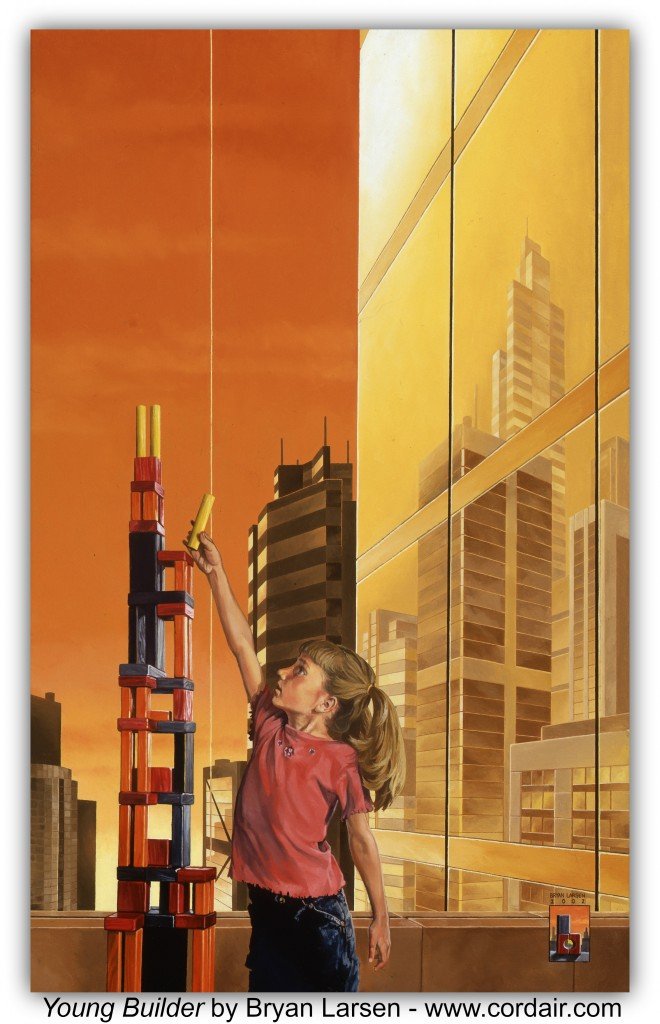
The Importance Of Art In The Workplace

An interview with Linda Cordair of Quent Cordair Fine Art with Ari Armstrong at The Objective Standard
With her husband, Quent, Linda Cordair operates the Quent Cordair Fine Art gallery, which aspires to help create “a rebirth of comprehensibility, beauty, romanticism and stylization to contemporary subject matter.” In addition to selling works of art, Linda also consults with businesses on placing artworks in office buildings and other places accessible to the public. Here she discusses that work.
Ari Armstrong: Briefly, what is the importance to a business of placing great works of art in or around their buildings?
Linda Cordair: Thanks for the opportunity to discuss this topic, Ari. Art is as important in the business world as it is in one’s personal world, and for the same reasons. In a business space, artwork helps shape the company’s unique style, spirit, and character, and conveys that character to employees, partners, clients, and prospective clients in much the same way that one’s business attire conveys one’s personal style and professionalism.
The artwork chosen for a business space can convey a devotion to important and distinctive values, helping distinguish the business from its competition, or it can convey a mere reflection of what is commonly accepted in the mainstream, or it can project a preference for the trendy and avant-garde, with little or no regard for how well or poorly the imagery may nourish the souls and minds of those who experience it. Artwork can help set and maintain a positive, optimistic, and ambitious perspective for those working in the space, or it can lend to a boring or draining atmosphere, or it can be markedly detrimental.
Having no or little art in a business space can project a lack of regard for the spiritual and psychological needs of those who work in or visit the space, or a lack of permanence and dependability, or a lack of sufficient financial resources to tend to such basic environmental necessities. Visiting a workplace without art can create the same sense one gets when visiting a space that is not adequately and comfortably heated, cooled, or lighted.
AA: What advice do you offer businesses regarding the kinds and sizes of artworks to place in their spaces?
LC: It depends on a number of factors, including budget, space available, and spatial configuration. That said, having a prominent piece—say in a lobby, boardroom, or front entrance—can be exceptionally impactful and impressive.
From the earliest recorded civilizations, large works of art have been created and employed effectively by those wishing to forcefully convey an idea or position. In the business world today, companies increasingly are recognizing the power and the bottom-line value of art in shaping the perceptions and expectations of both those in the company and out.
In business, we tell stories with TV commercials and create memorable themes with music and artistic imagery in advertising and marketing. Increasingly, business leaders realize that they can and should take as much care in selectively shaping the business space as they take in creating the detail and “feel” of their marketing and advertising materials. Even if there might not yet be the budgetary wherewithal or space available for a prominent, larger work in a space, a tasteful selection of smaller, well-positioned artworks can make a remarkable impression.
AA: When you consult with a business, surely you focus on works available through your own gallery, but do you help place works of art from other sources as well?
LC: The artists we represent often can be the best resource for what our clients are looking for, given the uniquely pro-business, pro-capitalism, pro-man theme of our gallery’s collection. But to meet clients’ needs, we also draw from our international connections and resources, having established relationships with the best dealers and artists around the world.
It’s always a great pleasure, too, in having one of our artists create a commissioned work that is tailored specifically to a company’s unique identity, vision, and needs. As one example, we’ve been honored to arrange and supervise the creation of annual commissions for BB&T, one of the largest financial services holding companies in the United States, for more than a decade now. Smaller firms we work with may only need one or two pieces to enhance an office or foyer. We excel in finding just the right fit for a space, art that the client truly loves and is proud to display, within the budget provided.
Interestingly, the present unpredictability in the markets is leading companies and individuals to seek out more art for their portfolios as a hedge, as they do real estate, precious metals, and the like. Although a gold coin is a lovely thing to hold and look at occasionally, one can’t really hang it on the wall or put it on a pedestal. Art, historically, not only provides a store of physical wealth, but it pays back daily spiritual and psychological wealth as well—an asset particularly valuable in times of uncertainty, when it can be quite challenging to stay positive and to keep our anxieties in check.
AA: You and Quent seek to promote “romantic realism” in artwork. Briefly, what does that mean, and do you see any positive trends in the availability or popularity of such artwork?
LC: We’re seeing much more attention given to aesthetics and craftsmanship these days, particularly with the example that Apple has set in the design of its products. Romantic Realism, as the description is used presently in the visual arts, is the genre of stylized, idealized realism. In Aristotle’s words, it is reality presented “as it could be and should be.”
Romantic Realism processes, shapes, and re-presents reality in accordance with the needs and processes of man’s valuing mind. From the perspective of having art in the business environment, Romantic Realism is uniquely appropriate; it’s valuable precisely because, as a style, it springs from, reflects, and upholds the same values, principles, and orientation to reality used by businesses in pursuit of success. In business, one must do one’s utmost to perceive the world clearly, to see things as they are, while visualizing an idealized, achievable improvement on that reality. One must be able to visualize one’s goals as clearly as possible, but also in terms of essentials, with the extraneous and nonessential details omitted or ignored. The essentialized, idealized vision provides the standard and the goal on the horizon—the “where we’re going” and “how we’re going to get there.” Having Romantic Realist art from which to draw inspiration not only provides fuel in its own right, but also sets the example of how we can and should go about pursuing those values.
We can’t achieve success by unfocusing our eyes and minds, by idealizing a kind of blurry, blotchy, vaguely defined reality—the style we see, for instance, in Impressionism. We can’t hope to succeed in creating a valuable product or service by coming to work and throwing whatever might be available at the wall, accepting the accidental and incomprehensible product of whatever might stick—as we see in the example provided by modernist “abstract art.” There’s a well-known adage: If you want to succeed, surround yourself with successful people. The same is true of one’s art: If you want to engender clear thinking, well-defined goals, and the confidence that an improved, more-beautiful reality is achievable, then the art for one’s working environment should be chosen accordingly.
As to availability, we’re definitely seeing an increase in the number of artists around the world who are creating well-executed, beautifully stylized representations of human beings and the modern world we live in. In our observation, the voguish trend of touting confusing and bizarre imagery, “abstract themes,” squiggles, blotches, and deformed bodies has bottomed out in bankruptcy. The emperor’s new clothes can still be found in museums and on the auction block, and those who are vested in “nonrepresentational art” will be selling it to each other for years to come—but the civilized world, to its credit, is beginning to move on. We need beauty and inspiration now more than ever, and thankfully, as the market is demanding, those standards are back.
AA: How can interested parties find out more about your artworks and services?
LC: Our gallery and offices are located at 1301 First Street, Napa, California. An extensive offering is viewable at our website at www.cordair.com. You can reach me, Linda, via e-mail at linda [at] cordair [dot] com or by phone at (707) 255-2242. We love answering questions about our services and our products, and helping beautify business spaces and homes.
All images appearing in this article are the property of Quent Cordair Fine Art and the artists they represent. The images are protected by U.S. Copyright Laws, and are not to be downloaded or reproduced in any way without the written permission of Quent Cordair Fine Art. Copyright 2014 Quent Cordair Fine Art – All Rights Reserved.
This interview was originally published via The Objective Standard in February 2013.










































